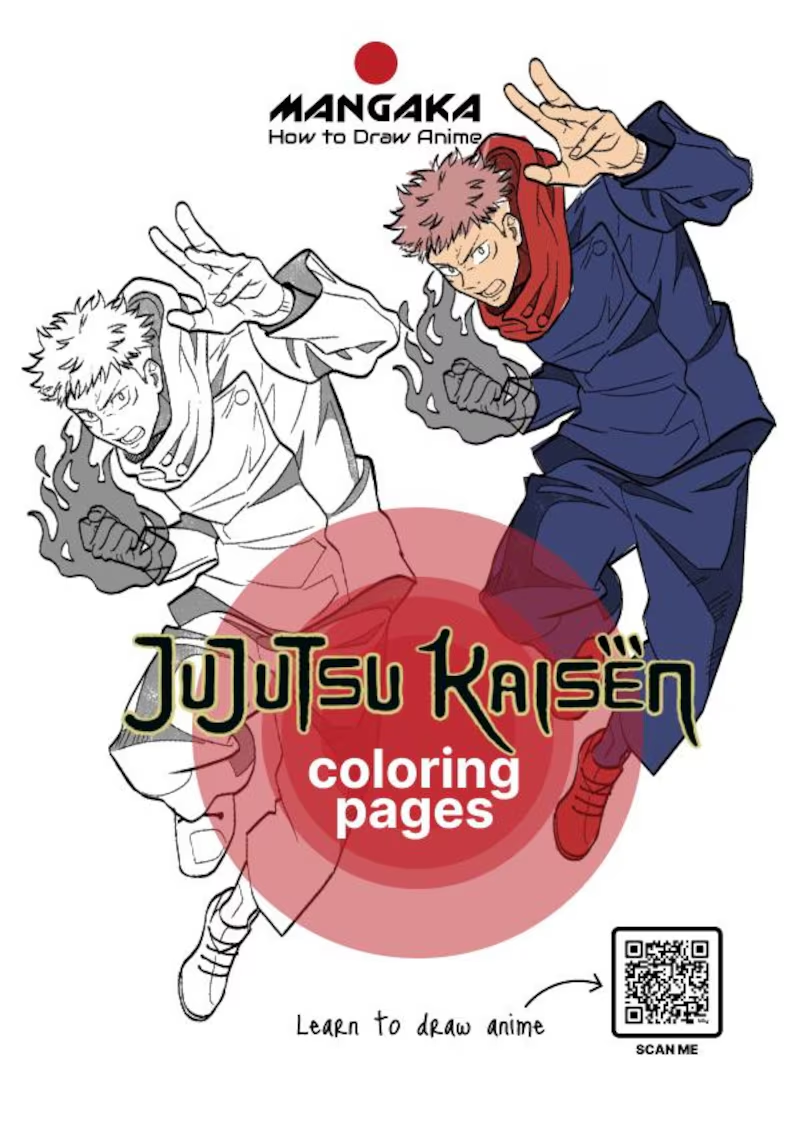Introduction
In the vibrant world of anime and manga, few titles manage to capture the imagination and interest of audiences worldwide as effectively as “Tougen Anki: Dark Demon of Paradise.” Created by the talented Yura Urushibara, this series has quickly risen through the ranks since its inception, now spawning a television anime and a highly anticipated game adaptation, “Tougen Anki: Crimson Inferno.” This expansion into multiple media platforms is not just a testament to the series’ popularity but also a reflection of its deep cultural resonance and storytelling prowess.
The recent release of the cinematic trailer for “Tougen Anki: Crimson Inferno” by Com2uS marks a significant milestone, captivating fans with its stunning visuals and immersive narrative promise. The game, slated for a 2025 launch on both mobile devices and PC, promises to deliver a 3D role-playing experience that closely mirrors the anime’s distinctive art style and rich character roster. This initiative not only extends the narrative universe of “Tougen Anki” but also invites players to engage more interactively with its world.
This article delves into the intriguing journey of “Tougen Anki,” from its origins in the pages of “Weekly Shōnen Champion” to its evolution into a multi-platform phenomenon. We’ll explore the cultural and historical context that has shaped its development, the insights gained from its expansion into gaming, and the challenges and opportunities this presents. Join us as we navigate the fascinating landscape of “Tougen Anki,” offering fresh perspectives and actionable insights along the way.
The Origins and Cultural Context of “Tougen Anki”
The Birth of a Cultural Phenomenon
“Tougen Anki” originated as a manga series in June 2020, published by Akita Publishing in the “Weekly Shōnen Champion” magazine. This was a period marked by a resurgence of interest in dark fantasy narratives within the manga community, with readers drawn to stories that explore complex themes of morality, power, and the supernatural. Yura Urushibara’s creation was well-timed, tapping into these themes with a fresh perspective that set it apart from contemporary works.
The manga’s storyline, rich with mythical references and intricate character arcs, quickly garnered a dedicated following. Its narrative weaves together elements of traditional Japanese folklore with modern storytelling techniques, creating a tapestry that resonates with both domestic and international audiences. This blend of the old and new is a hallmark of Japanese cultural exports, often finding success across borders.
Key Developments and Milestones
Since its debut, “Tougen Anki” has achieved several significant milestones. The series’ growing popularity led to the publication of its 26th compiled book volume, set to ship on October 8. This expansion reflects not only the series’ enduring appeal but also its ability to evolve and remain relevant in a rapidly changing entertainment landscape.
In September 2024, Yen Press began publishing the manga in English, broadening its reach and making it accessible to a global audience. This move was pivotal in cementing “Tougen Anki” as a staple in the international manga community, introducing its themes of dark fantasy and complex characters to new readers.
The subsequent adaptation into a television anime, which debuted on July 11, further amplified its reach. Streaming on platforms like Crunchyroll, Netflix, and Prime Video, the anime has made “Tougen Anki” accessible to viewers worldwide, with the exception of Japan and Mainland China. The release of an English dub by Crunchyroll has ensured that language barriers do not impede its global appreciation.
Main Insights: The Expansion into Gaming
Bridging the Gap Between Anime and Interactive Media
The announcement of “Tougen Anki: Crimson Inferno” as a 3D role-playing game marks a significant expansion of the franchise. This transition from a narrative-driven anime to an interactive gaming experience exemplifies the growing trend of cross-platform storytelling, where fans can engage with their favorite stories in multiple formats.
The game aims to emulate the anime’s art style, providing players with a visually immersive experience that remains true to the original narrative. This fidelity to the source material is crucial, as it maintains the integrity of the story while offering fans a new way to interact with their beloved characters.
Engaging a Diverse Audience
One of the core strengths of the “Tougen Anki” franchise is its diverse cast of characters, each with unique abilities and backgrounds. This diversity is not only a reflection of the series’ narrative depth but also a strategic move to appeal to a broad audience. By offering a wide range of characters, the game can cater to different play styles and preferences, ensuring that every player finds a character they resonate with.
The game’s development for both mobile devices and PC also broadens its accessibility, making it available to gamers with varying preferences and hardware capabilities. This inclusivity is essential in an industry where accessibility can often determine a game’s success.
The Role of Cultural Elements in Game Design
Incorporating cultural elements from the original manga into the game design is a strategic approach that enhances the overall player experience. By weaving traditional Japanese folklore and mythology into the game’s narrative and mechanics, “Tougen Anki: Crimson Inferno” offers players a culturally rich and immersive experience.
This cultural authenticity not only appeals to fans of the manga and anime but also attracts players interested in exploring stories rooted in Japanese culture. The game’s narrative serves as a bridge, connecting players to a broader cultural context and deepening their understanding of the themes and motifs that define “Tougen Anki.”
Challenges and Opportunities
Navigating Cross-Cultural Adaptation
As “Tougen Anki” expands into different media, one of the primary challenges lies in adapting its content for diverse cultural audiences. While the series’ themes have universal appeal, ensuring that cultural nuances are accurately represented in translations and adaptations is crucial. This requires careful consideration of language, symbolism, and cultural references to maintain the story’s integrity and authenticity.
However, this challenge also presents an opportunity. By engaging with cultural consultants and experts, the franchise can create adaptations that not only respect the source material but also enhance its appeal to a global audience. This approach fosters cross-cultural understanding and appreciation, broadening the series’ impact and reach.
Balancing Innovation and Tradition
The transition from manga to anime and now to gaming requires a delicate balance between innovation and tradition. While it’s essential to introduce new elements and mechanics to keep the content fresh and engaging, it’s equally important to preserve the core aspects that define “Tougen Anki.”
This balance can be achieved by leveraging new technologies and storytelling techniques while staying true to the original narrative and character development. By doing so, the franchise can continue to innovate without losing the essence that has made it a beloved cultural phenomenon.
Future Outlook
The Evolving Landscape of Anime and Gaming
The success of “Tougen Anki” is indicative of a broader trend in the anime and gaming industries, where cross-platform storytelling is becoming increasingly prevalent. As technology continues to advance, we can expect more franchises to explore innovative ways to engage audiences, bridging the gap between traditional narratives and interactive experiences.
The integration of virtual reality and augmented reality technologies into gaming could further enhance this trend, offering even more immersive experiences for fans. “Tougen Anki: Crimson Inferno” is well-positioned to be at the forefront of this evolution, setting a precedent for future adaptations.
The Global Influence of Japanese Culture
As “Tougen Anki” continues to expand its reach, it also contributes to the growing influence of Japanese culture on a global scale. The series’ success highlights the universal appeal of stories that blend traditional cultural elements with contemporary themes, resonating with audiences worldwide.
This cultural exchange enriches the global entertainment landscape, fostering a deeper understanding and appreciation of Japanese culture. As more franchises follow in “Tougen Anki’s” footsteps, we can anticipate a continued rise in the popularity and impact of Japanese cultural exports.
Conclusion
The journey of “Tougen Anki” from a manga series to a multi-platform phenomenon is a testament to the power of storytelling and cultural resonance. As the franchise expands into gaming with “Tougen Anki: Crimson Inferno,” it not only offers fans new ways to engage with its world but also sets a benchmark for future adaptations in the anime and gaming industries.
By embracing cross-platform storytelling and cultural authenticity, “Tougen Anki” has carved a niche for itself in the global entertainment landscape. Its success highlights the importance of balancing innovation with tradition, ensuring that beloved stories continue to captivate and inspire audiences worldwide.
As fans eagerly await the release of “Tougen Anki: Crimson Inferno,” the franchise’s future looks bright, promising new adventures and cultural exchanges that will enrich the global anime community. Whether you’re a seasoned fan or new to the series, “Tougen Anki” invites you to explore its rich tapestry of stories and characters, offering a journey that is as exciting as it is enriching.





